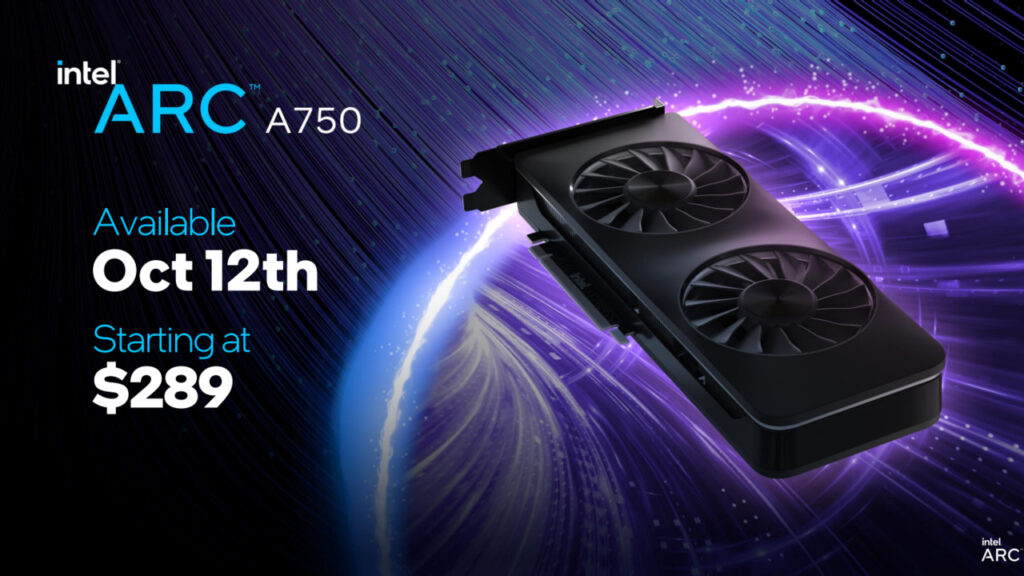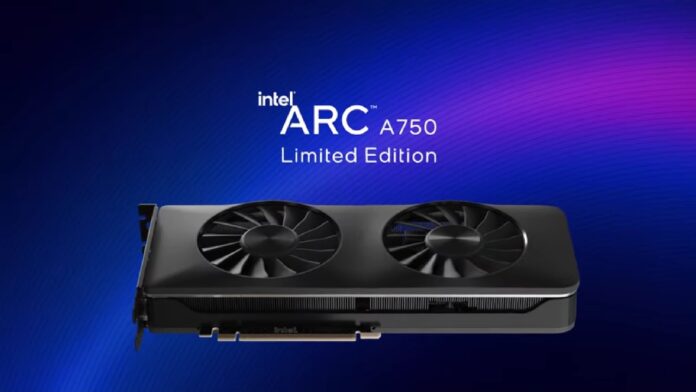Intel has already started its entry into the GPU market with the Intel Arc Alchemist series, with three more series coming out in the future (codenamed Battlemage, Celestial, and Druid). But for now, we are going to have a look at the Intel Arc A750 and what it’s hiding under the hood.
Pricing and Release Date

The A750 has already come out on October 12th of 2022, with a starting price point of 289$. Given this price point, the hardware that it offers is excellent. The only real problems are related to driver issues, but Intel is hard at work trying to nip all those issues in the bud.
Specifications
This GPU is built on the 6nm TSMC architecture with a die size of 406 mm2, offering a total of 21 billion transistors. The bus interface is the usual PCIe 4.0 x16 with a total memory size of 8 GB GDDR6, a memory bus of 256 bits, and a total bandwidth of 512 GB/s. Clock speed is set at 2050 MHz with no boost options, which might come as a surprise to overclock enthusiasts.
The board design features a dual-slot width with an estimated TDP of 225 W. Intel recommends you run this GPU with a minimum PSU of 550 W. As far as outputs go, the A750 comes equipped with one HDMI 2.1 and three DisplayPort 2.0, making it an ideal fit for people who run multi-monitor setups.
Build quality is pretty good, with a dual-fan cooler running over a series of heat pipes and an aluminium heatsink. RGB fans should be happy to know that it also features a ring of RGB LEDs around the card edge.
Performance
If you’re a dedicated gamer, you should be aware that, like the rest of the series, this GPU might struggle with certain games, especially ones running on older APIs like DX11. This is because Intel has solely focused on current APIs like DX12 and Vulkan, mostly ignoring older ones. Despite this, Intel higher-ups have assured us their drivers will “get there” eventually. But to get there, they will need more time.
Regarding direct comparisons, the A750 offers pretty much the same performance as the RX 6600 in most games running at 1080p. If you’re interested in 1440p, you will be happy to find out that it somewhat outclasses the RX 6600, even though not by a lot. 4K is where this GPU starts to struggle, so maybe look for a different GPU if you already run a 4K setup.
It may seem surprising that the A750 works quite well for ray tracing. The fact that they managed to catch up to NVIDIA in such a short period mostly means the future is looking bright for Intel. I would still recommend that you use their new XeSS upscaling technology since ray tracing is still a very demanding graphical feature, especially in more recent games.
While you won’t be running the most graphically intensive games at Ultra settings in all resolutions, the A750 is a more than a decent midrange graphics card. If you’re focused on building a budget gaming PC, the A750 might be the right option for you.



